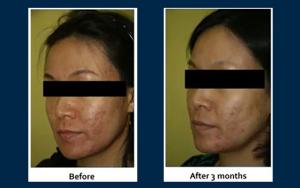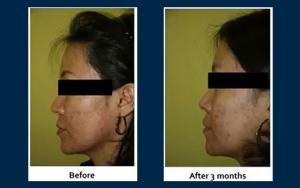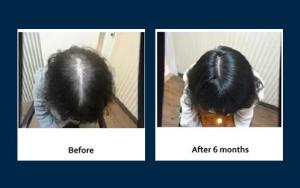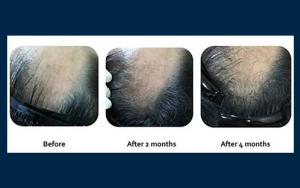Дерматологические процедуры » Autologous growth factor
Autologous growth factor treatment or Platelet Rich Plasma (PRP) Therapy
The History of PRP Treatment
PRP first began being
researched in the 1970s. It was first used in an open heart surgery procedure
in Italy in 1987. After successfully being used in that procedure, PRP grew in popularity starting in the mid-1990s. Today, Platelet rich plasma treatment has been applied to a variety of medical fields, including cosmetic surgery, dentistry, sports medicine, and pain management in many clinics around the world.
Platelet Rich Plasma (PRP) is premium anti-aging skin treatment.
The treatment uses components called platelets
contained in the patient's own blood. Platelets contain an abundance of growth factors
which stimulate stem cell production, collagen synthesis, proliferation of
fibroblasts and angiogenesis to rejuvenate the skin.
Platelet Growth Factor
Stimulates Stem Cell Production PRP (Platelet rich plasma) is
defined as autologous blood with a concentration of platelets above baseline
values. • Average normal platelet count
= 200,000/ul (normal range: 150,000 – 350,000/ul)
Blood is made up of 4 components including plasma, red blood cell (RBC), white blood cell (WBC), and platelets.
A normal blood would be made up of 93% red blood cell, 6%
platelets and 1% white blood cell. Through the use of centrifuge, the blood
components are separated and the ratios are changed in PRP to 94% platelets
and
Growth Factor Function
Growth Factor is a
naturally occurring substance capable of stimulating cellular growth,
proliferation, healing, and cellular differentiation.
Growth factors are important for regulating a variety of cellular processes and typically act as signaling molecules between cells. They often promote cell differentiation and maturation, which varies between growth factors.
Examples of some Growth Factors
- Transforming Growth Factor-beta (TGF-β) - Platelet Derived Growth Factor (PDGFa-b) - Epidermal Growth Factor (EGF) - Vascular Endothelial Growth Factor (VEGF) - Basic Fibroblast Growth Factor (BFGF) - Connective Tissue Growth Factor (CTGF)
PRP injection procedure
Step 1: Blood is drawn from the
patient 15-20 CC Step 2: The collected blood is
placed in a centrifuge that concentrates the platelets and growth factors into
a smaller amount of plasma.
PRP Therapy Advantages
• No risk of transmissible
infection and allergic reaction • Natural result • Longer duration of efficacy • No need for skin incision • Simple procedure • Minimal discomfort • Shorten downtime
Depending on the severity of skin troubles, most patients require between one and three treatments. Each set of treatment is spaced 3 to 4 weeks apart.
Pre-Injection Precautions
- Avoid corticosteroid medications for 2 to 3 weeks prior to the procedure - Stop taking non-steroidal anti-inflammatory drugs (NSAIDs), such as aspirin or ibuprofen, or arthritis medications such as Celebrex, a week prior to the procedur - Do not take anticoagulation medication for 5 days before the procedure - Drink plenty of fluids the day before the procedur - Some patients may require anti-anxiety medication immediately before the procedure
Affection:
- You may experience some discomfort, but do not despair! Your body is reacting in the normal and desired way to the sudden influx of platelets and healing factors.
- You may want to ice and elevate your injury, perhaps even use Tylenol for pain relief. But ibuprofen, Advil and other NSAIDs will produce the opposite reaction that the procedure is trying to create.
- This treatment should be just a part of a rehabilitation planned by your doctors in order to get you back to your best. Finally, the PRP injection process may seem to be over-simplified, but it really is a very easy and effective way to treat tendonitis in all its forms.
Who cannot have PRP treatment?
PRP Injection for Facial Rejuvenation
PRP stimulates your own
collagen to grow for total facial rejuvenation rather than individual wrinkle
improvement.
PRP is used for:-
-Volumizing faces that are beginning to look drawn -Plumping out cheek indentations and soften under eye hollows -Improving the skin tone, tightness, and texture -Filling in areas where hyaluronic acid fillers cannot reach or are not safe to use.
Benefits of PRP Injection for Facial Rejuvenation
It can improve skin tone and texture, tighten skin, soften lines and pores. Results begin to show 3-4 weeks after the treatment session and continue to improve with time. Three treatment sessions are generally recommended, spaced 1-2 months apart, to achieve the best outcome.
How many treatments of PRP Injection for Facial Rejuvenation are required?
The initial treatment for PRP is one treatment a month for 3 to 4 months, then repeat treatments either 6-monthly or 12-monthly, depending on your skin and results.
PRP therapy can be combined with laser treatments, microdermabrasion, chemical peels, botox or derma filler for the best results.
When will be able to see the result after PRP Injection for Facial Rejuvenaion?
Results become visible at 3 weeks and increase gradually over ensuing months with improvement in the skin’s texture and tone.
PRP Injection for Hair Loss
PRP contains growth factors that help to repair the injury and damaged caused by DHT hormones to your hair follicles, therefore helping to promote the regrowth of thicker and healthier hair.
PRP will signal the body to send PLATELETS and PLASMA to the area, to repair the injured cells. Adding additional PRP increases the amount of repairing cells (platelets) and nutrients (plasma) in the hair loss region. This exposes the skin cells and the hair follicles to large amounts of healing platelets and nutrient rich plasma.
Benefits of PRP Injection for Hair Loss
•
PREVENT & slow down the
rate of hair loss, thinning, hair shedding & hair fall. •
REGROW thinning hair thicker,
fuller and healthier.
•
BOOST the health &
condition of the scalp naturally
•
ACTIVATE the regrowth of
dormant hair follicles by encouraging the growth phase of your hair (anagen
phase) • HAIR TRANSPLANT PRP has shown to help prepare the area for a hair transplant + also to assist with the recovery and growth rate after receiving a hair transplant.
How many treatments of PRP Injection for Hair Loss are
required?
We recommend continuously 4 times
treatments, spaced up to 4 weeks apart. Then it can be continue to enhance the
result. Patients are recommended to receive a treatment every 1-3 months apart.
PRP therapy can be combined with laser treatments, hair growth lotion and pills for the best results.
When will the hairs be regenerated after PRP Injection for Hair Loss?
It will be within 1 or 2 months after the treatment.
Call Center: +66 618240996 Line ID : laserpremium |























